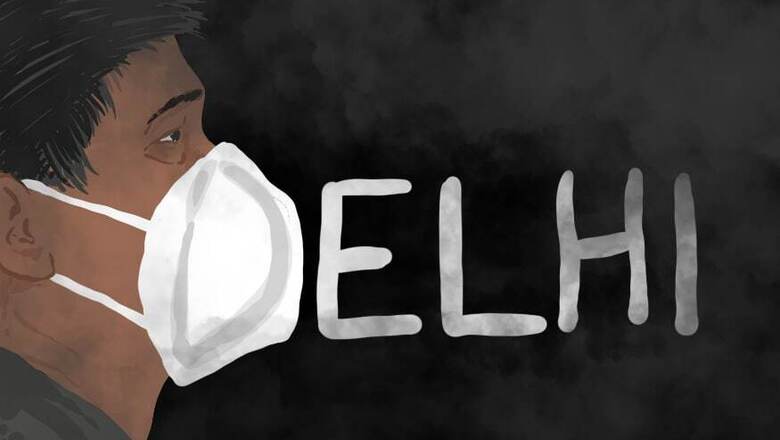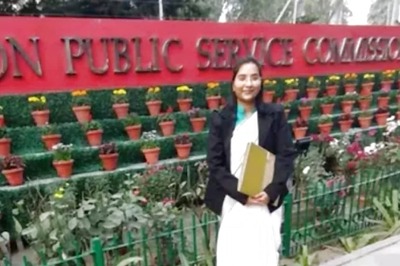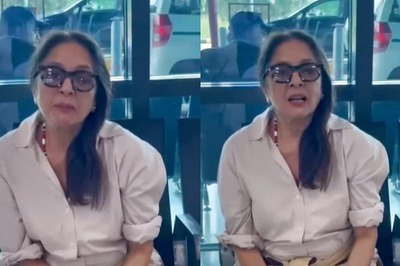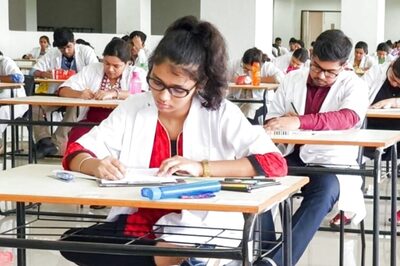
views
New Delhi: There has been some relief for Delhiites with the smog clearing and giving way to blue skies in the capital. But that ‘relief’ needs to be put in context, said experts and officials. Delhi has had just two days of ‘good’ or breathable air in the past 829 days.
The first was on July 31, 2017, when the Air Quality Index (AQI) measured was 47 and the next was on August 18, when the AQI was 49. In both cases, it wasn’t human intervention that lead to the dip, but intermittent rains and strong winds that drove pollution levels down.
The air on Wednesday was ‘poor’ with the AQI languishing at 219 – levels at which the government advises against “breathing discomfort to most people on prolonged exposure”. ‘Satisfactory’ levels of air, when the AQI is between 51 and 100, can lead to “minor breathing discomfort to sensitive people,” the National Ambient Air Quality Index notes.
Five years ago, when Union environment minister Prakash Javadekar released the National Air Quality Index, he had said that the index was a part of the government’s mission to “introduce the culture of cleanliness” and that “as a part of the process” to create institutional and infrastructural change, “clean air would be a part of Peoples’ campaign to take up the issue in a mission mode”.
An official of the Delhi Pollution Control Committee told News18 that although a number of measures had been implemented, and that the air quality – by and large – had improved as a result, a “lot still needed to be done”.
“Delhi never has good quality air. So, every day you’re breathing polluted air and that is reducing your life…little by little,” said the official, who didn’t wish to be named.
Earlier in January, the then Union minister for environment and current Union minister for health had told Parliament that there was no conclusive data available in the country to establish a direct cause-effect link between air pollution and death.
This was a month after study was published titled ‘The impact of air pollution on deaths, disease burden, and life expectancy across the states of India: the Global Burden of Disease Study 2017’. Funded by the Indian Council of Medical Research (which is under the aegis of the union health ministry) said otherwise. It said that “one out of every eight deaths in India could be attributed to air pollution” and that the average life expectancy of the country could be 1.7 years higher had pollution levels been under acceptable levels.
The air in Delhi and the cities around it was the worst, and the most lethal.
“There is a key problem. People think that the air is bad during the stubble burning period and the rest of the time it is fine. That is not the case. The air is bad through the year… the smog periods are extreme but it is the accumulation of the pollution that gets to you,” added the official.
Back in 2007, a study by IIT Delhi’s Centre for Atmospheric Sciences and commissioned by the Delhi government said that “emissions of pollutants may exceed” limits with vehicular government and concluded that “control” was required for “commercial diesel vehicles in Delhi”.
Over 12 years later, and after much outrage over Delhi’s air, another report, this time by the Institute of Tropical Meteorology (IITM) under the ministry of earth sciences, underlined how little had changed. The first-ever high resolution emission inventory of major pollutants in the capitals showed that vehicular emissions had grown, not just in Delhi but across the national capital region -- the PM 2.5 emissions from vehicles had grown from 25 percent in 2010 to 41 percent in 2018 in Delhi.
A key chink in Delhi’s armour in its battle against air pollution remains the absent public health system. Something the AAP government is acutely aware of.
As things stand, Jasmine Shah, chairperson of the Delhi Dialogue Commission said that there are a total of 4,000 buses slated to hit Delhi roads -- 1,000 standard floor buses, 1,000 low floor cluster buses by, 1,000 low floor DTC buses and 1,000 electric buses.



















Comments
0 comment